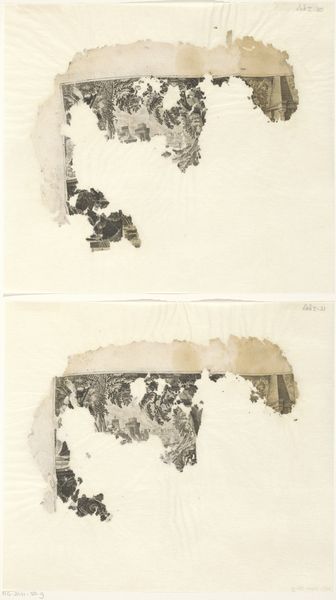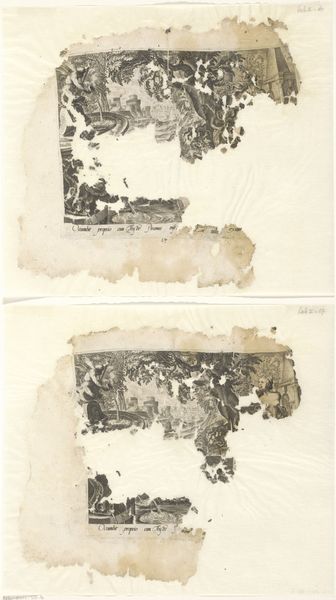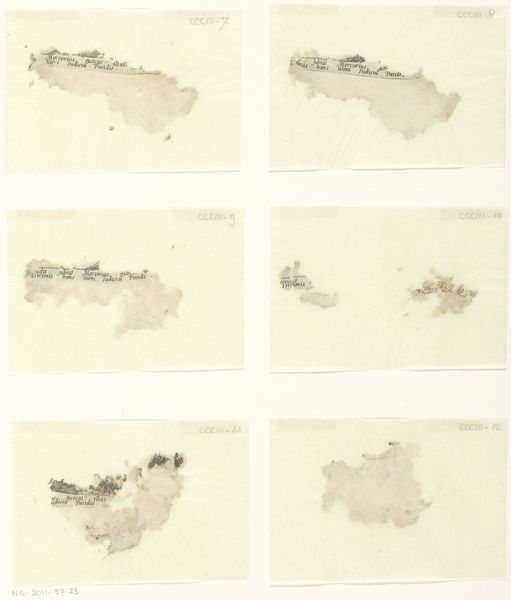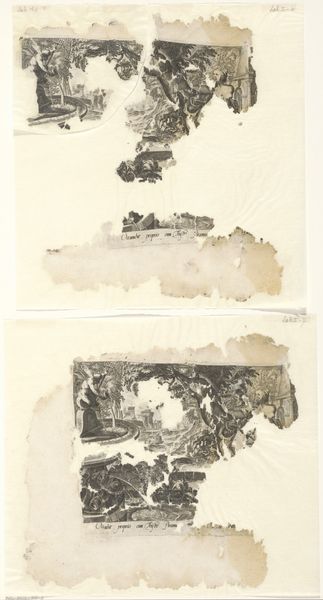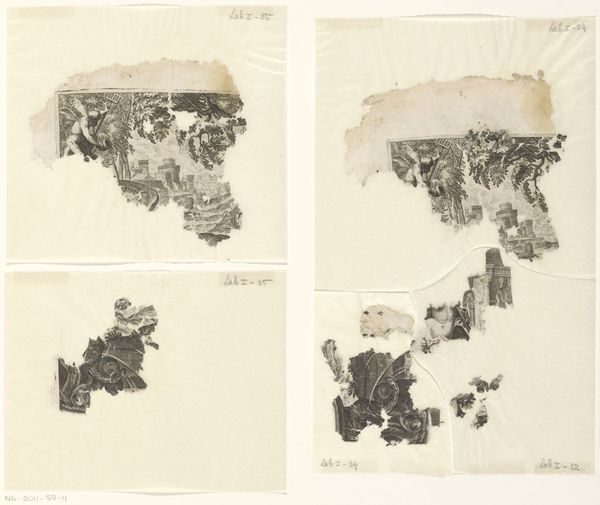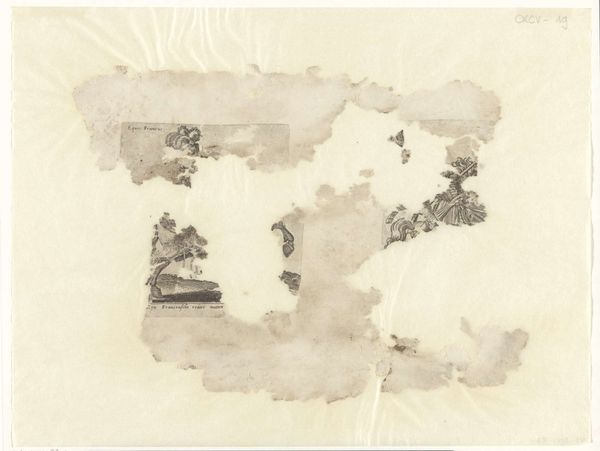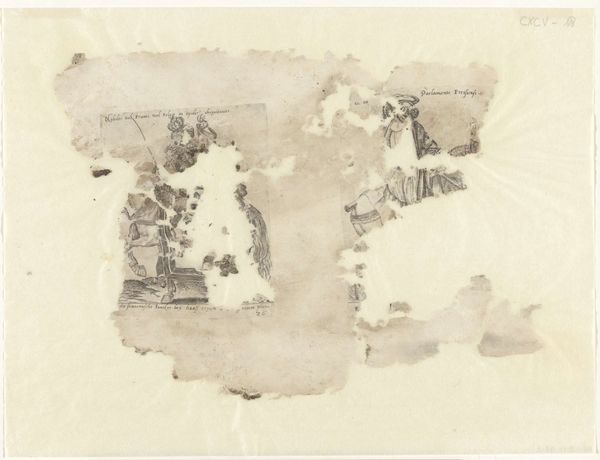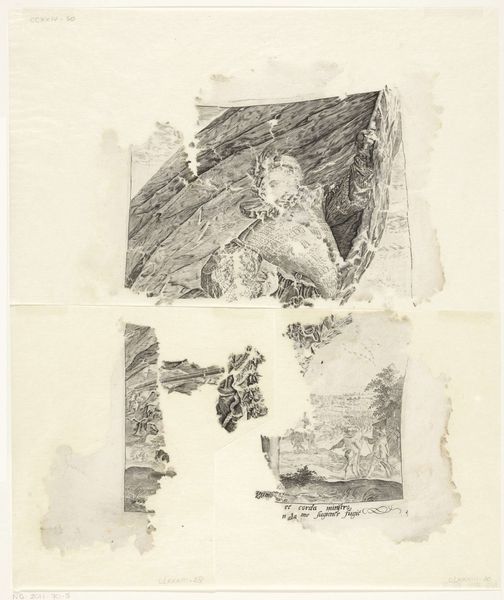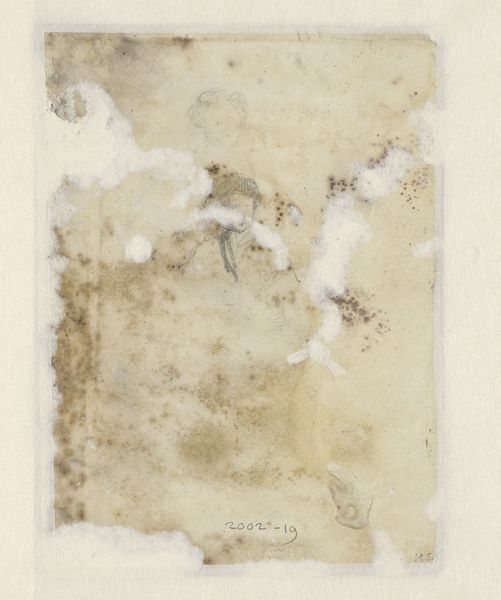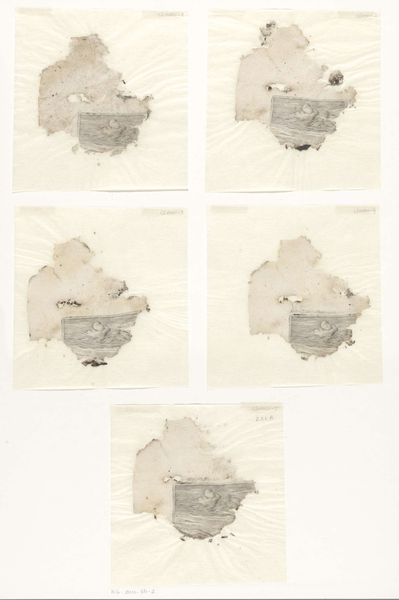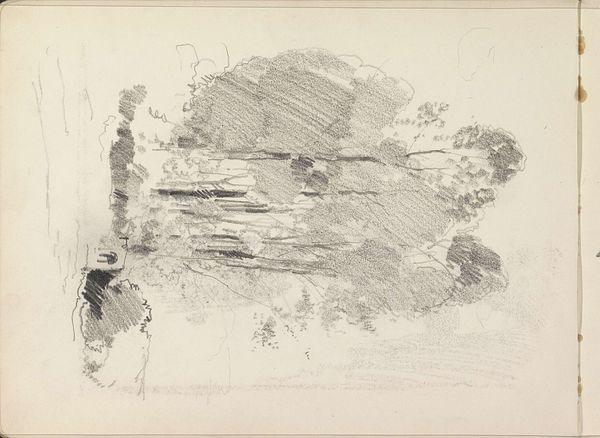
print, etching
#
narrative-art
# print
#
etching
#
etching
#
mannerism
#
history-painting
Dimensions: height 168 mm, width 238 mm, height 205 mm, width 242 mm
Copyright: Rijks Museum: Open Domain
Curator: The fragility of these etching fragments is striking. What do you make of them? Editor: Well, the decay certainly lends them a mournful aura, despite their intricate detail. It feels like looking at relics of a forgotten era, with hints of mannerism swirling around, it almost has the semblance of classical art Curator: Indeed. These are, as the title indicates, “Loose Fragments of Prints of Pyramus and Thisbe," dating from 1580 to 1596. They currently reside here at the Rijksmuseum. They are the work of an anonymous artist, depicting scenes from the tragic tale of Pyramus and Thisbe. The tragic romance that defies a wall. Editor: I suppose we have no idea how or why they were broken? What strikes me is the story; doomed love, separation, and the monstrous lion. Those archetypes resonate still so deeply in today's social conversations about identity, barriers, gender roles, and ultimately, politics and love. Curator: Precisely. The institutional history of how fragmented pieces such as these end up in museum collections is often a complicated one. It really provokes thinking about preservation and loss. Did the imagery become fragmented over time? Were the plates damaged? Was it later destroyed for some unknown socio-political issue? Or do only portions remain due to private collectors of the day? Editor: You bring up a fascinating point. When looking through today's critical lens, I see metaphors everywhere in their incomplete forms, representing fragmented identities or perhaps broken social constructs, a world where narratives are rarely whole or clear, forcing us to reckon with what's missing. How are museums going to keep preserving broken, damaged, ruined items? Are we saving relics of colonialism or are we highlighting a cautionary tale? Curator: That contemporary relevance really shifts the lens! But the political power of art lies in precisely how interpretations change across time and space, shaping public perceptions. What resonates most to me is how the Rijksmuseum has been working towards giving fragmented and lost art pieces, the opportunity to live forever! Editor: I agree; these fragments offer a compelling view into love and tragedy. Thank you! Curator: Indeed. They encourage us to look closer, reflect on art’s social life, and maybe, fill in those gaps with our own critical perspectives.
Comments
No comments
Be the first to comment and join the conversation on the ultimate creative platform.
